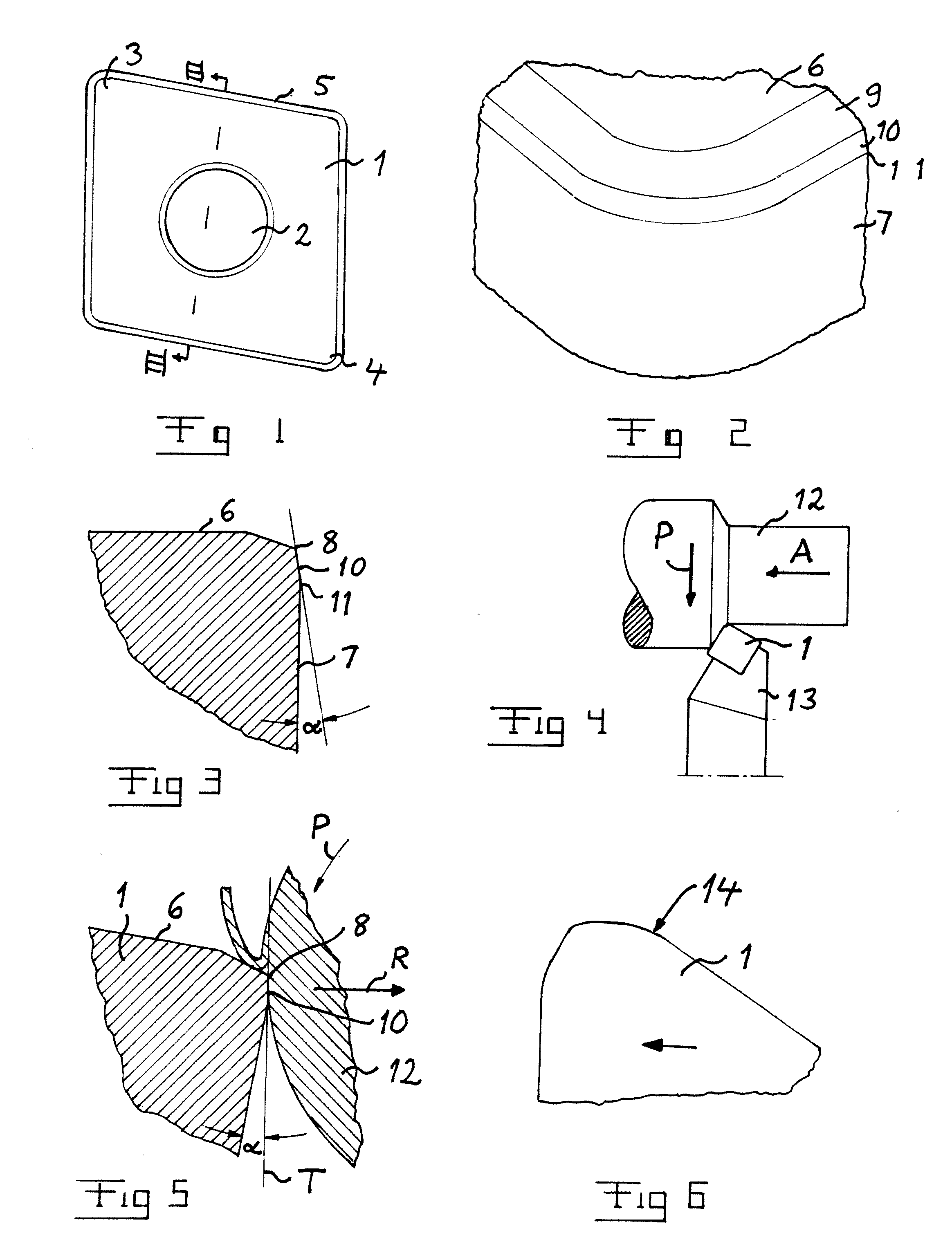Negative insert for cutting machining
a technology of cutting machining and inserts, which is applied in the direction of cutting inserts, shaping cutters, manufacturing tools, etc., can solve the problems of increasing the roughness of the generated surface, annoying noise, and negative influence, so as to improve the properties of the insert, reduce the roughness of the surface, and excellent the effect of the effect of the effect of the inser
- Summary
- Abstract
- Description
- Claims
- Application Information
AI Technical Summary
Benefits of technology
Problems solved by technology
Method used
Image
Examples
Embodiment Construction
[0034]FIG. 1 shows a negative turning insert 1 having a geometry typical for such an insert, and which is adapted to be secured in a tool holder by appropriate means, such as tightening means, while using a recess 2 therein. Such a recess is not necessary, but the insert may be without a recess and held in the tool holder by a clamp. The insert will machine a work piece by the region of a corner thereof, and it is preferably of the type enabling such machining by use of more than one such corner, such as at least the corners 3 and 4, so that the position of the insert in the tool holder may be changed when the accuracy of the machining may not be guaranteed any longer when using a certain corner region for such machining. The dimensions of the lateral sides 5 of the insert are preferably so that adjacent corners may be used for machining, which means that the cutting depths may then not be larger than half the distance between such two adjacent corners, so that for instance for an i...
PUM
| Property | Measurement | Unit |
|---|---|---|
| Angle | aaaaa | aaaaa |
| Radius | aaaaa | aaaaa |
| Radius | aaaaa | aaaaa |
Abstract
Description
Claims
Application Information
 Login to View More
Login to View More - R&D
- Intellectual Property
- Life Sciences
- Materials
- Tech Scout
- Unparalleled Data Quality
- Higher Quality Content
- 60% Fewer Hallucinations
Browse by: Latest US Patents, China's latest patents, Technical Efficacy Thesaurus, Application Domain, Technology Topic, Popular Technical Reports.
© 2025 PatSnap. All rights reserved.Legal|Privacy policy|Modern Slavery Act Transparency Statement|Sitemap|About US| Contact US: help@patsnap.com



